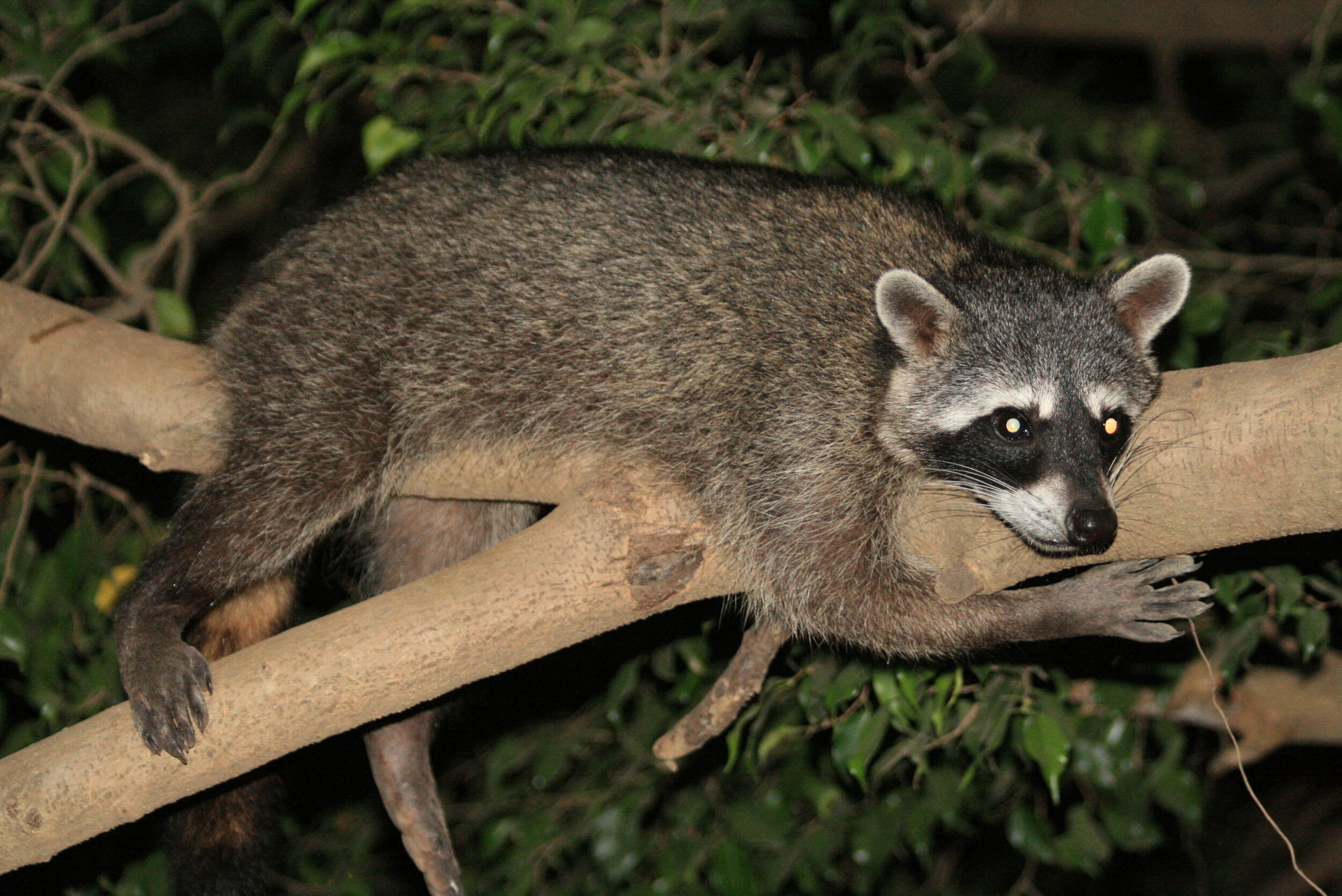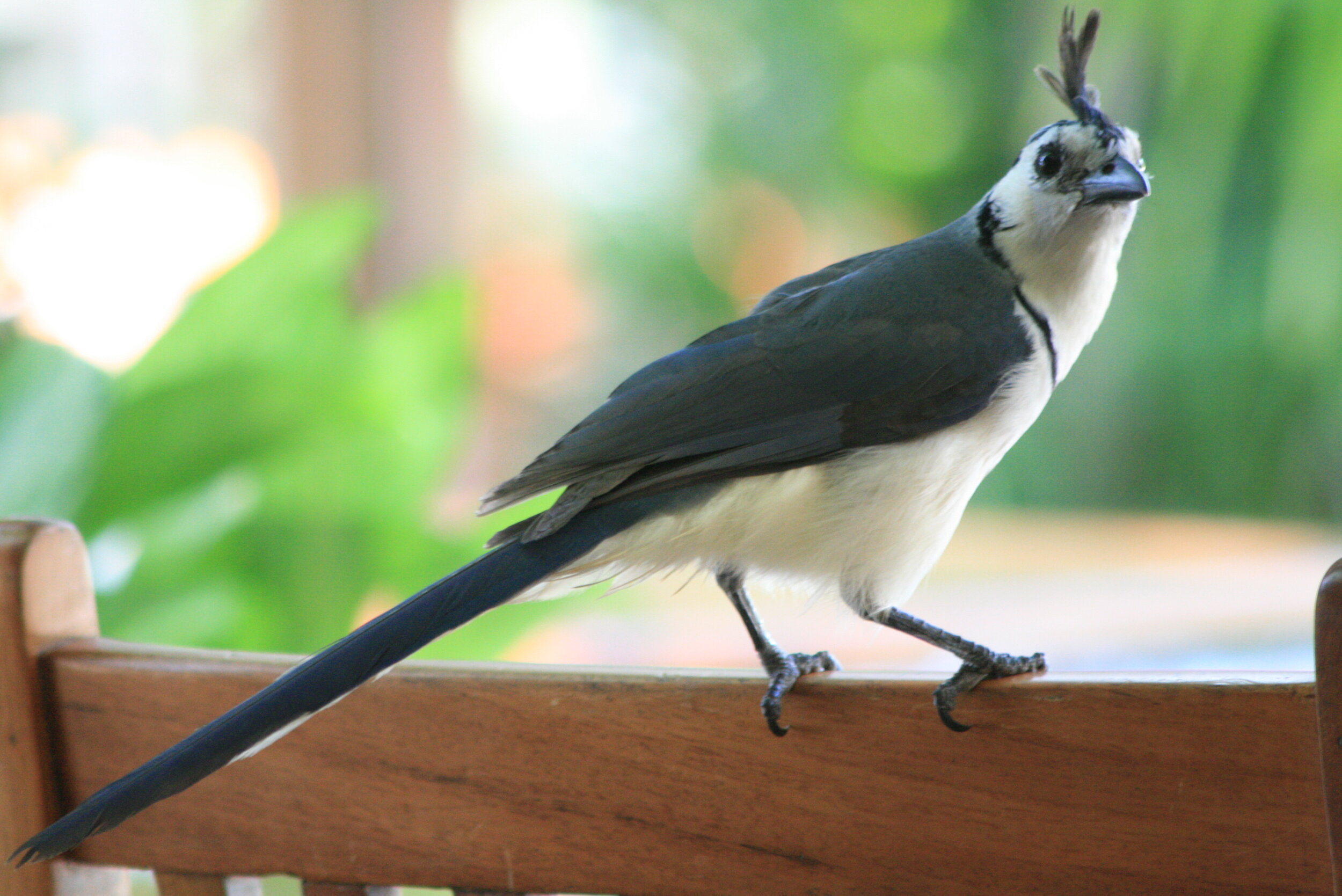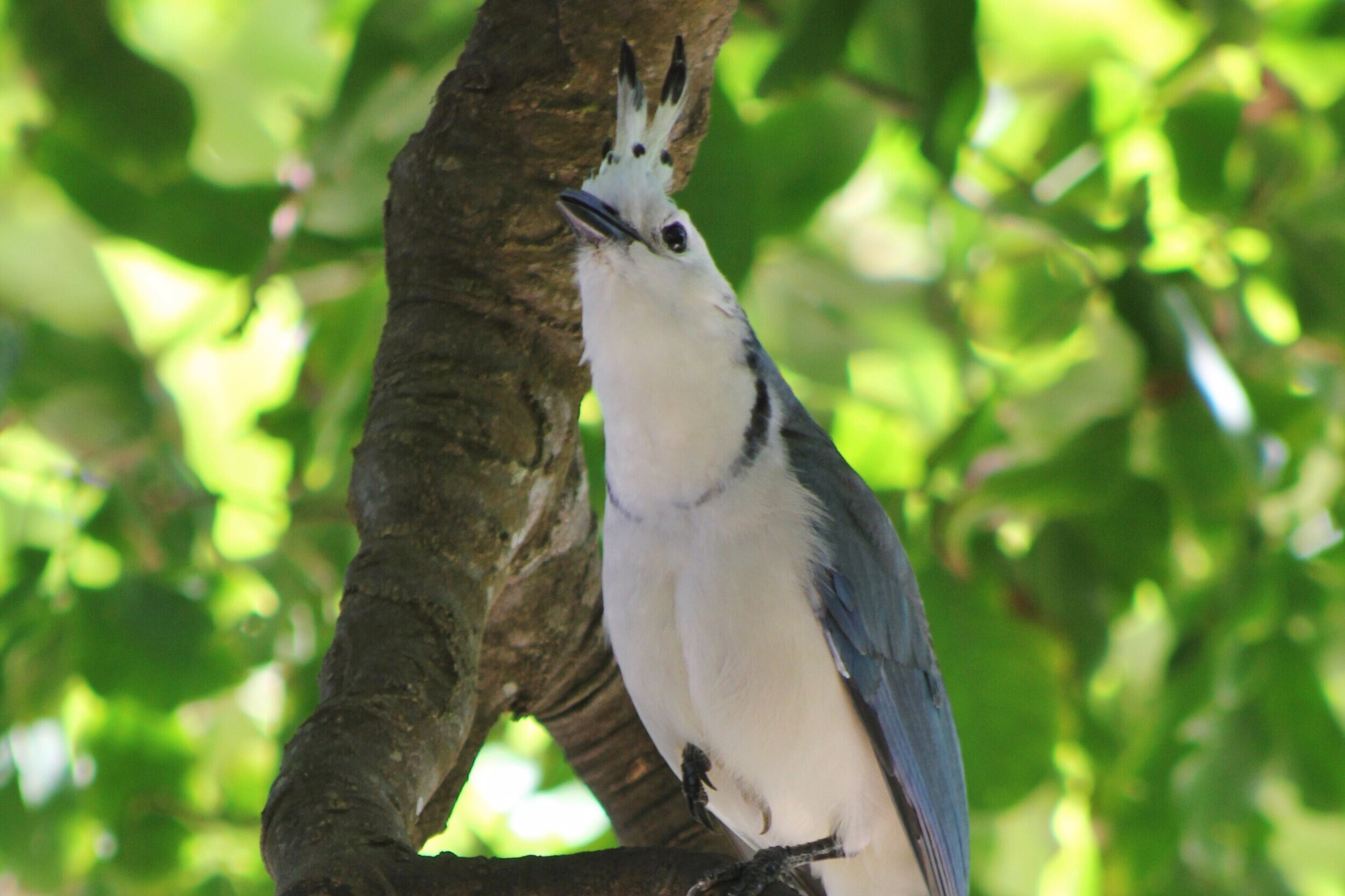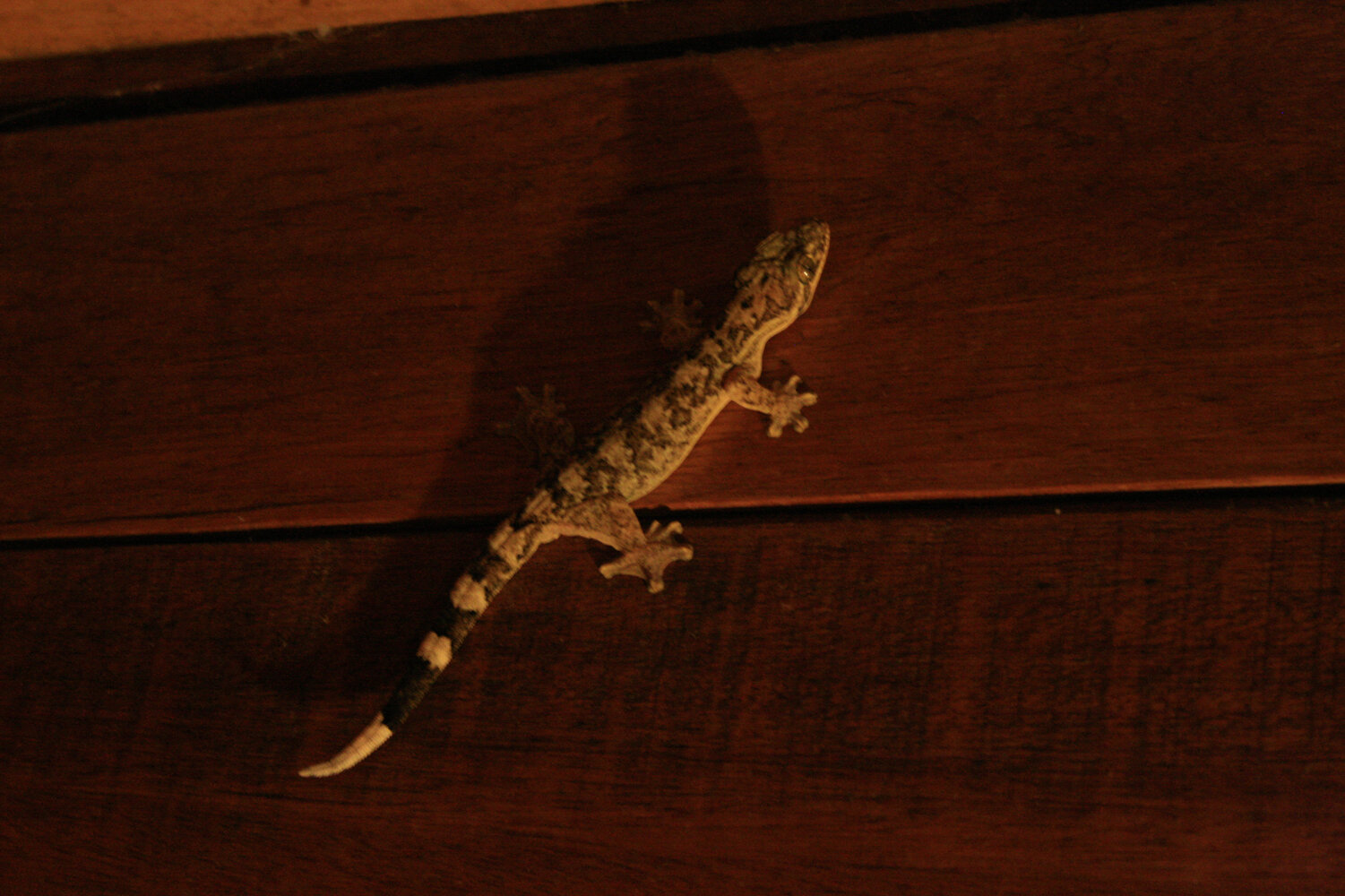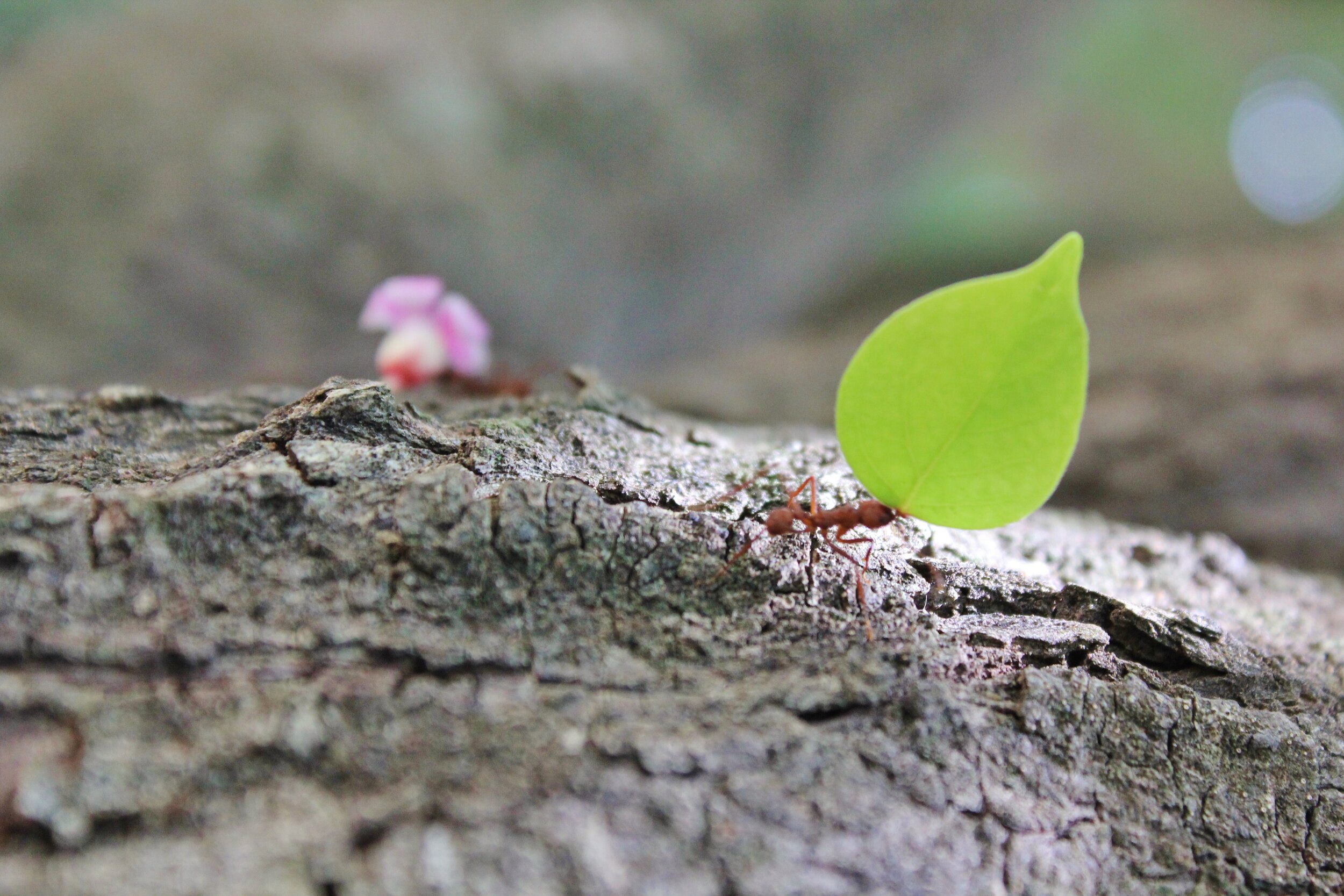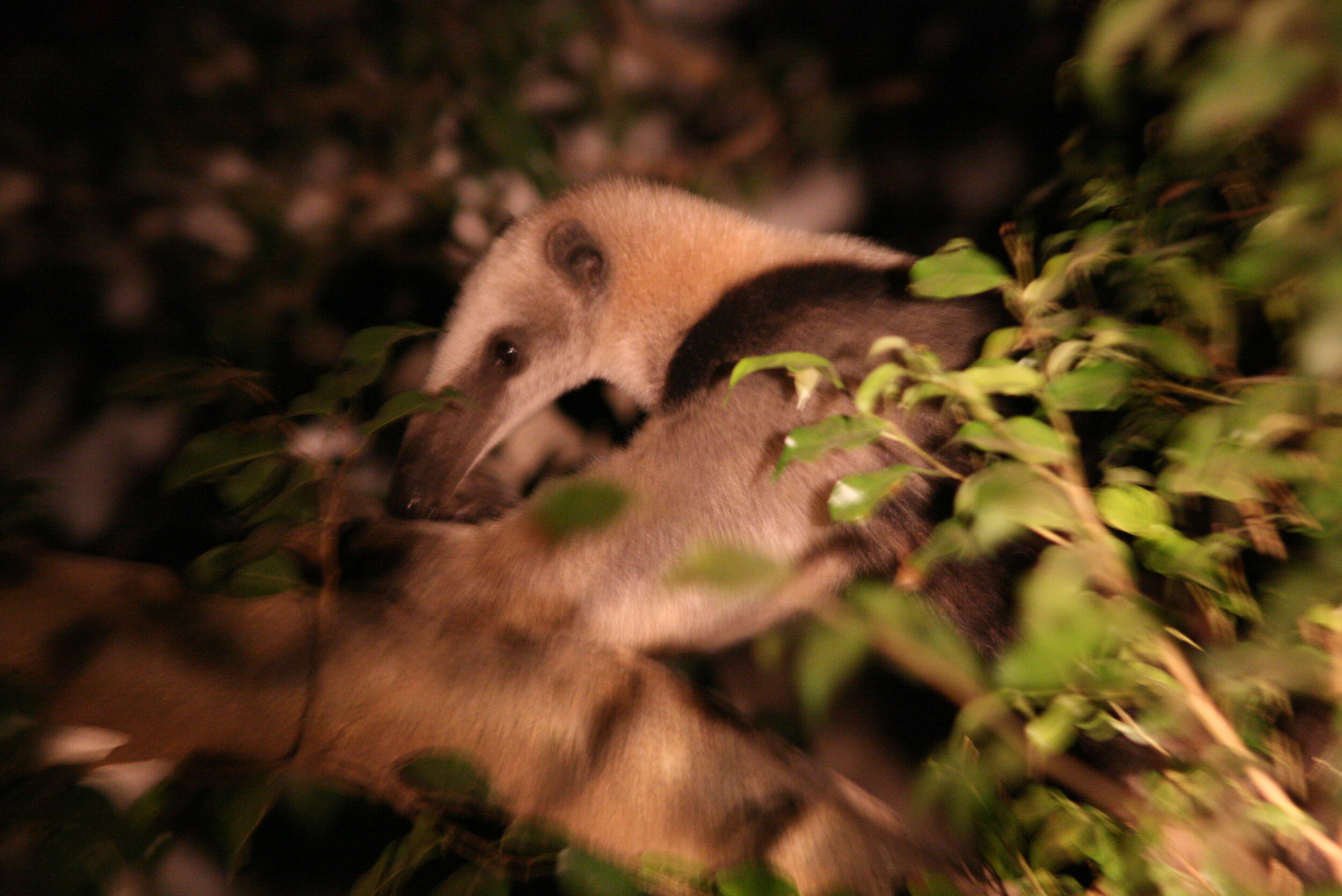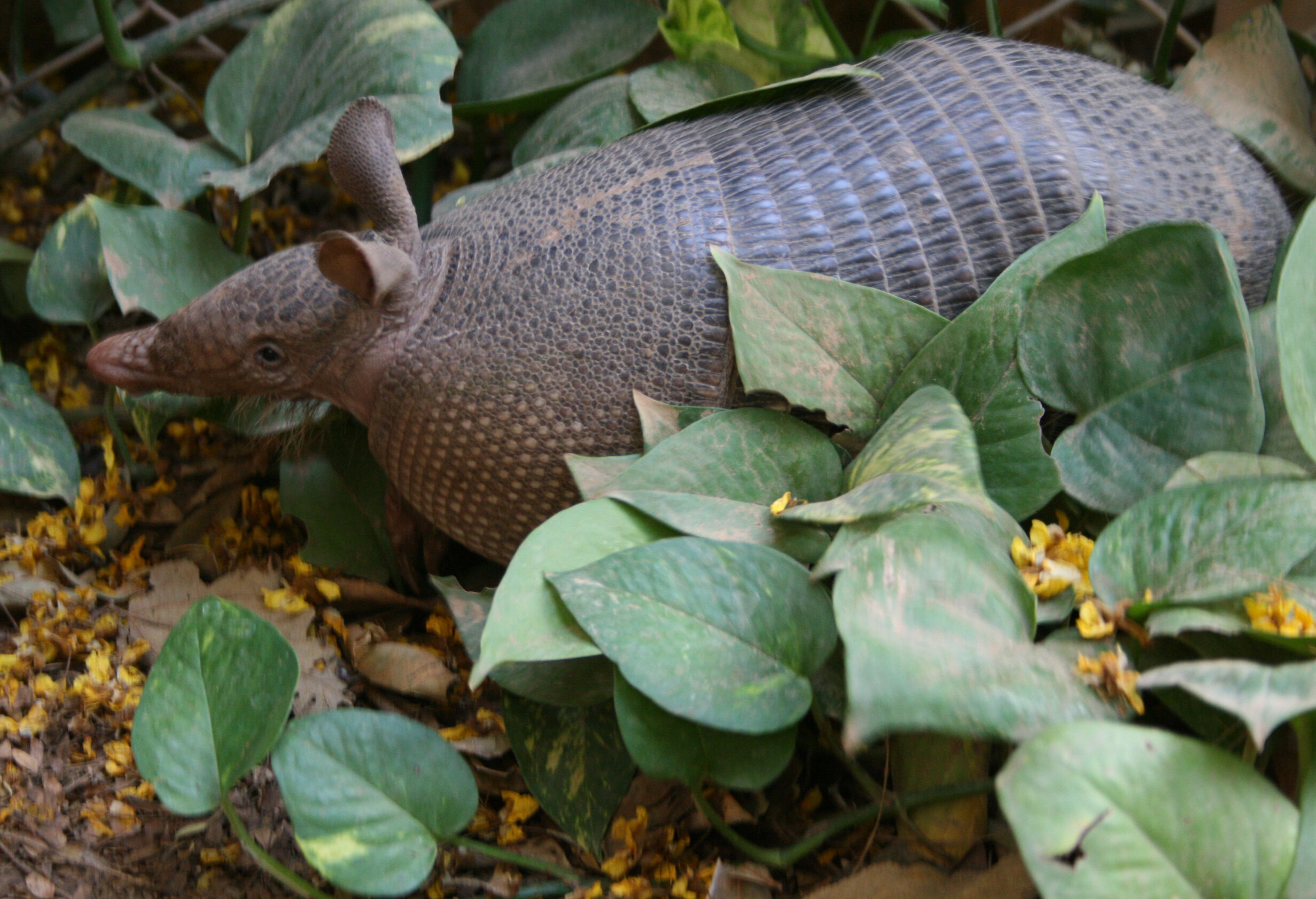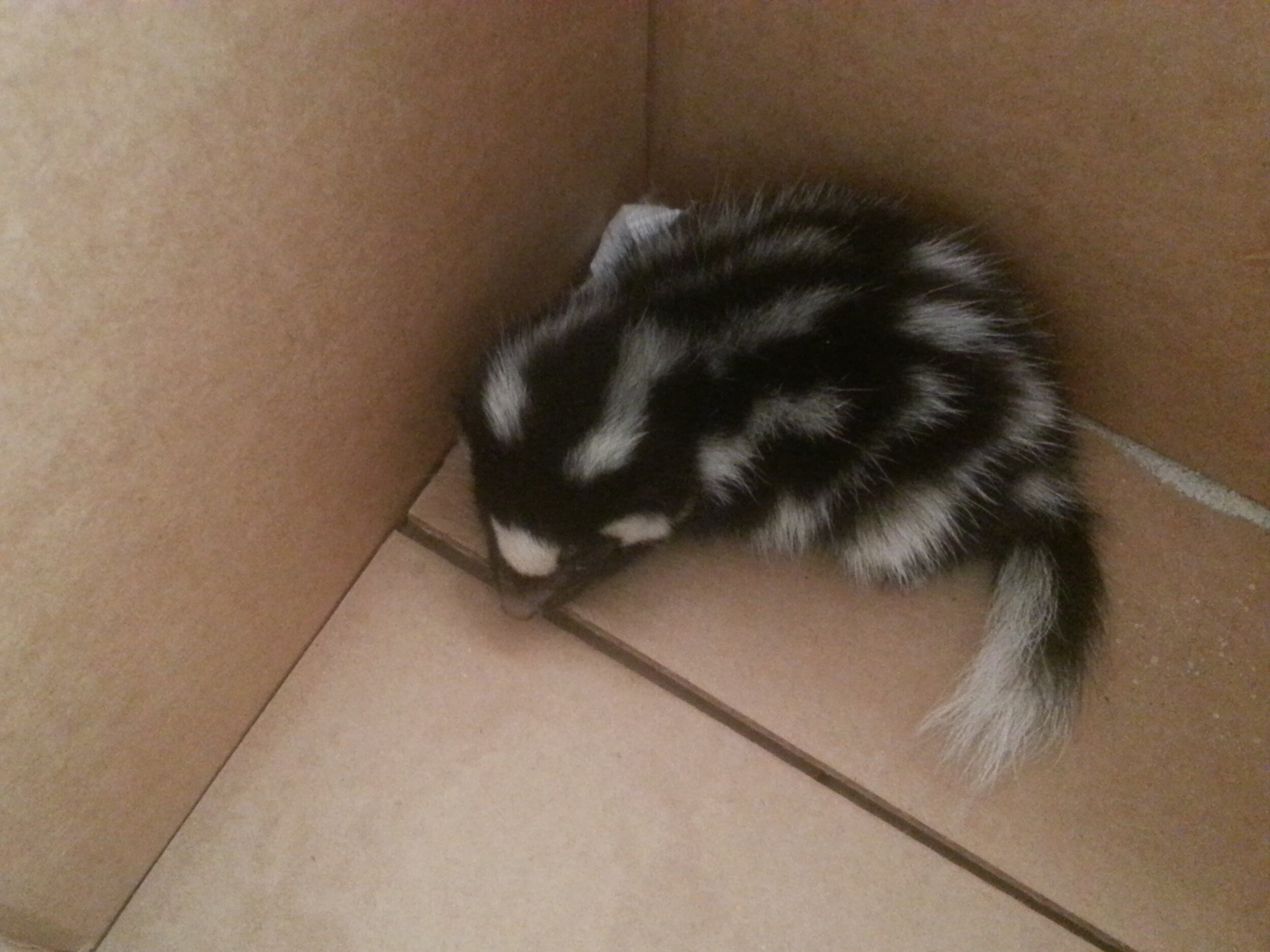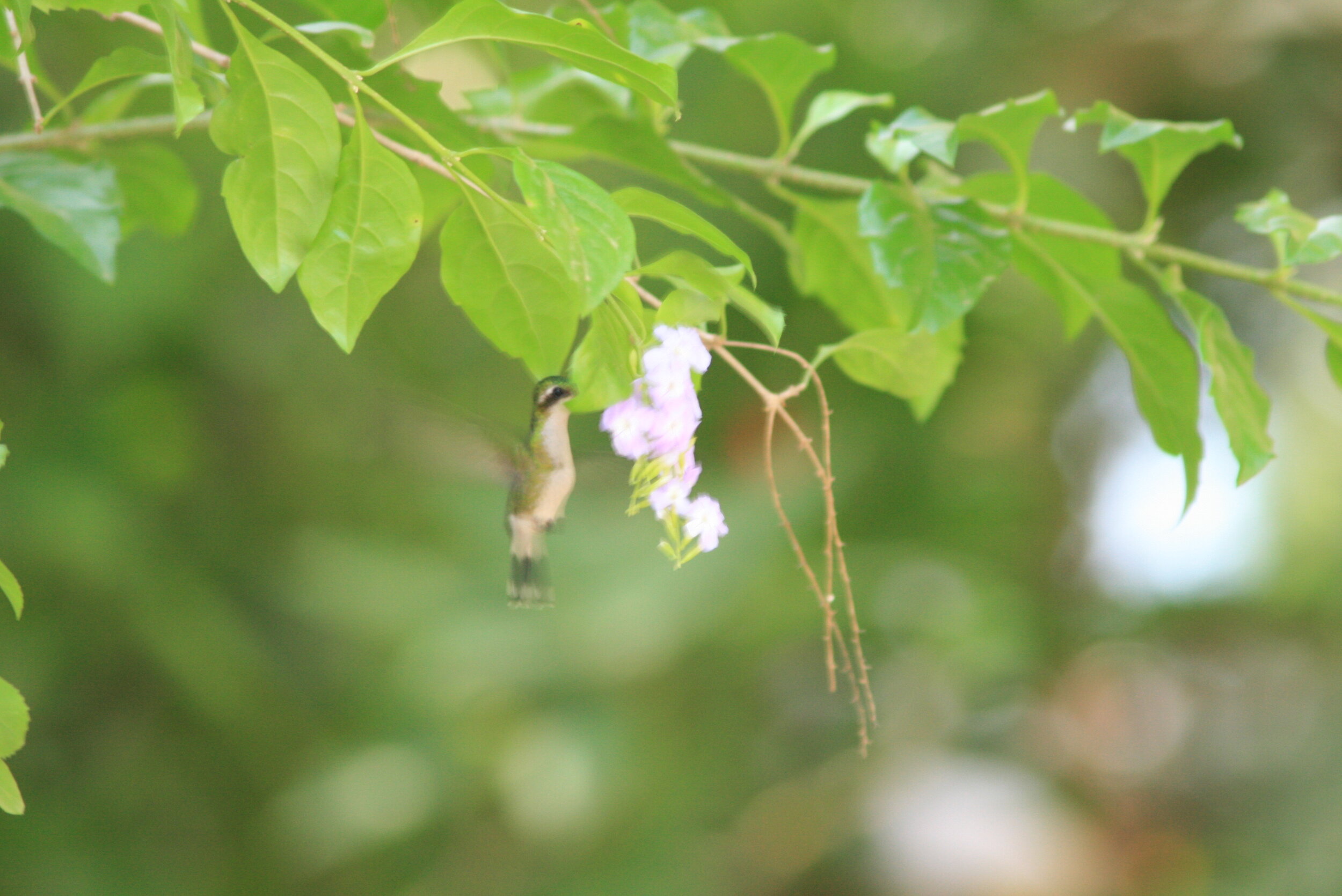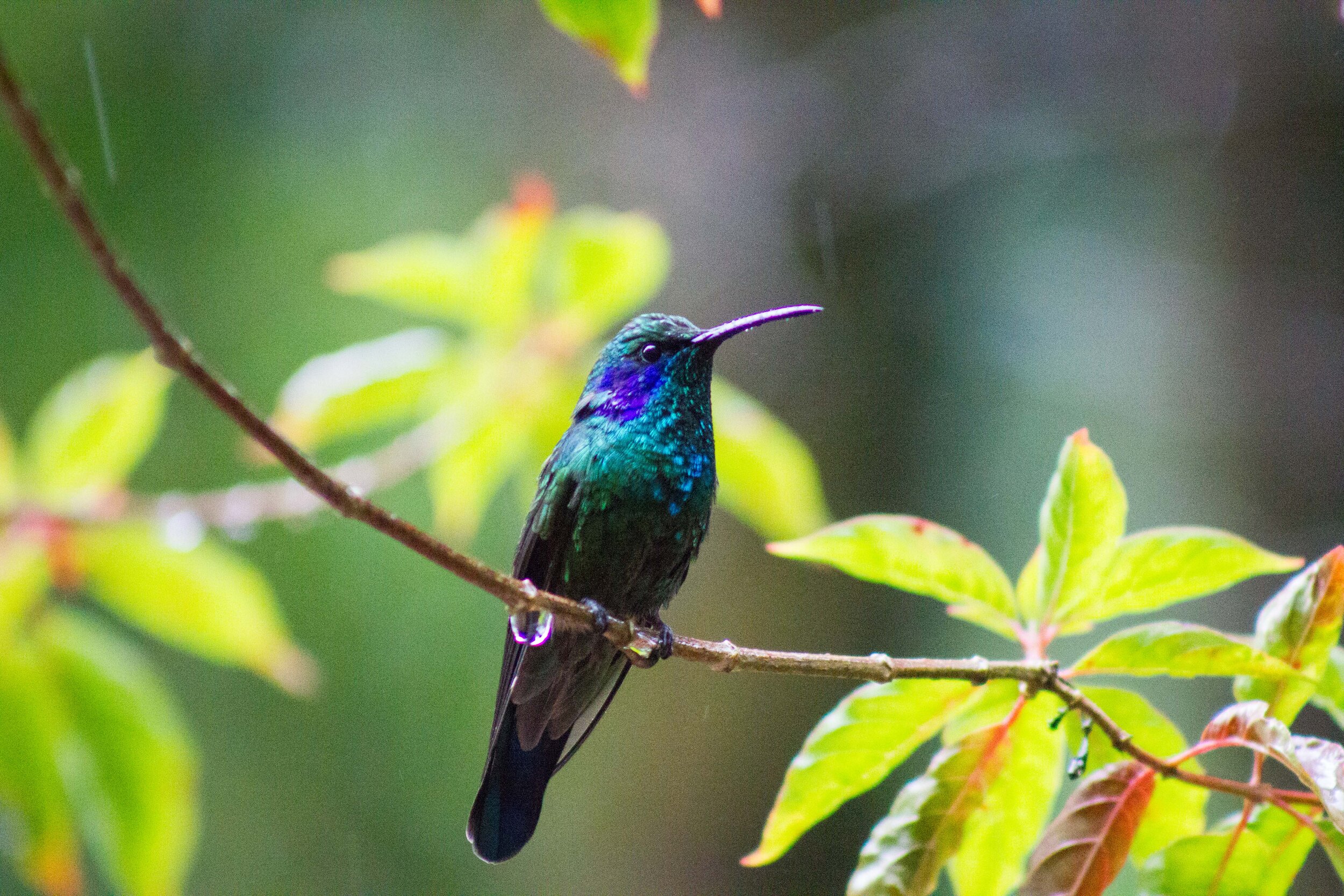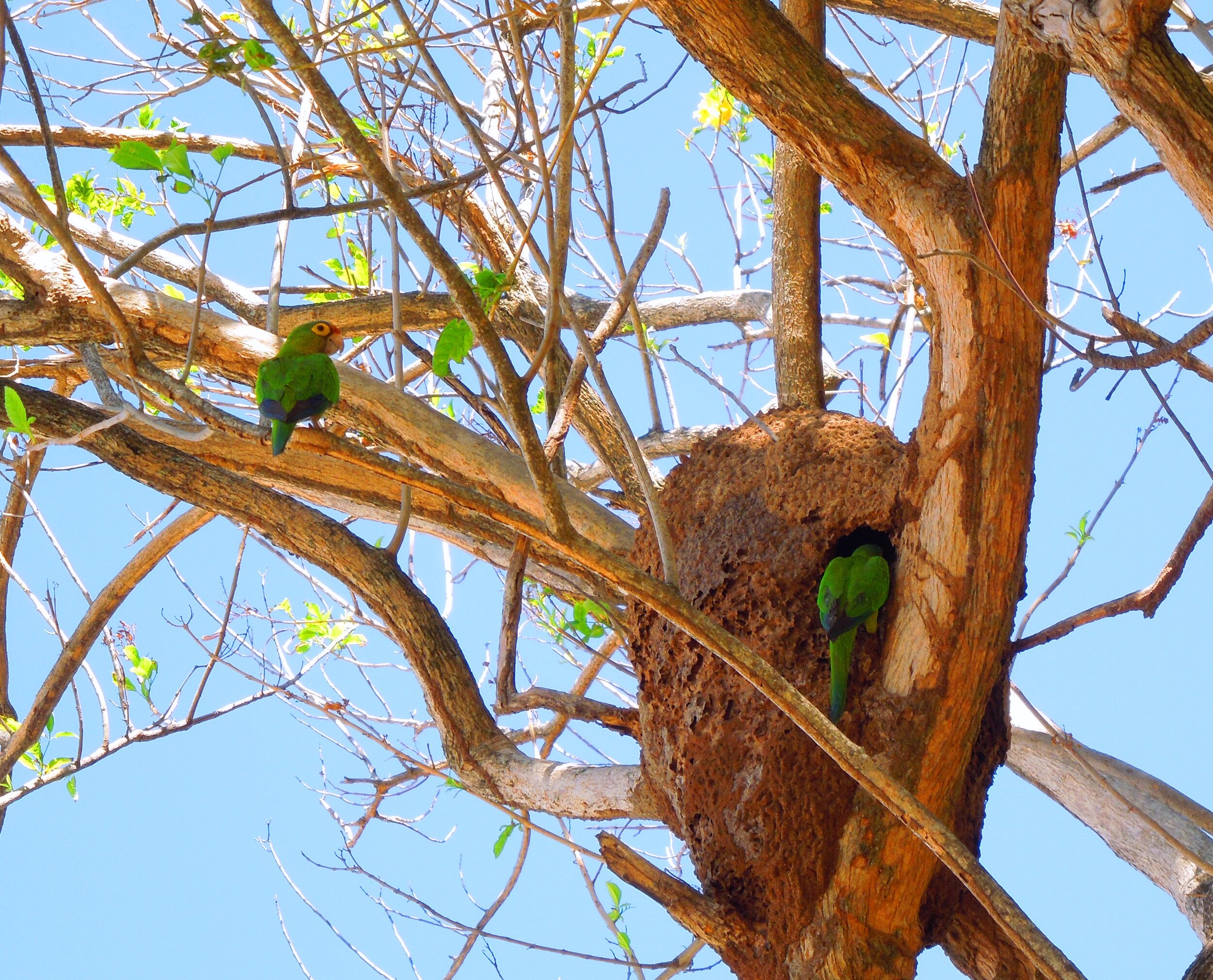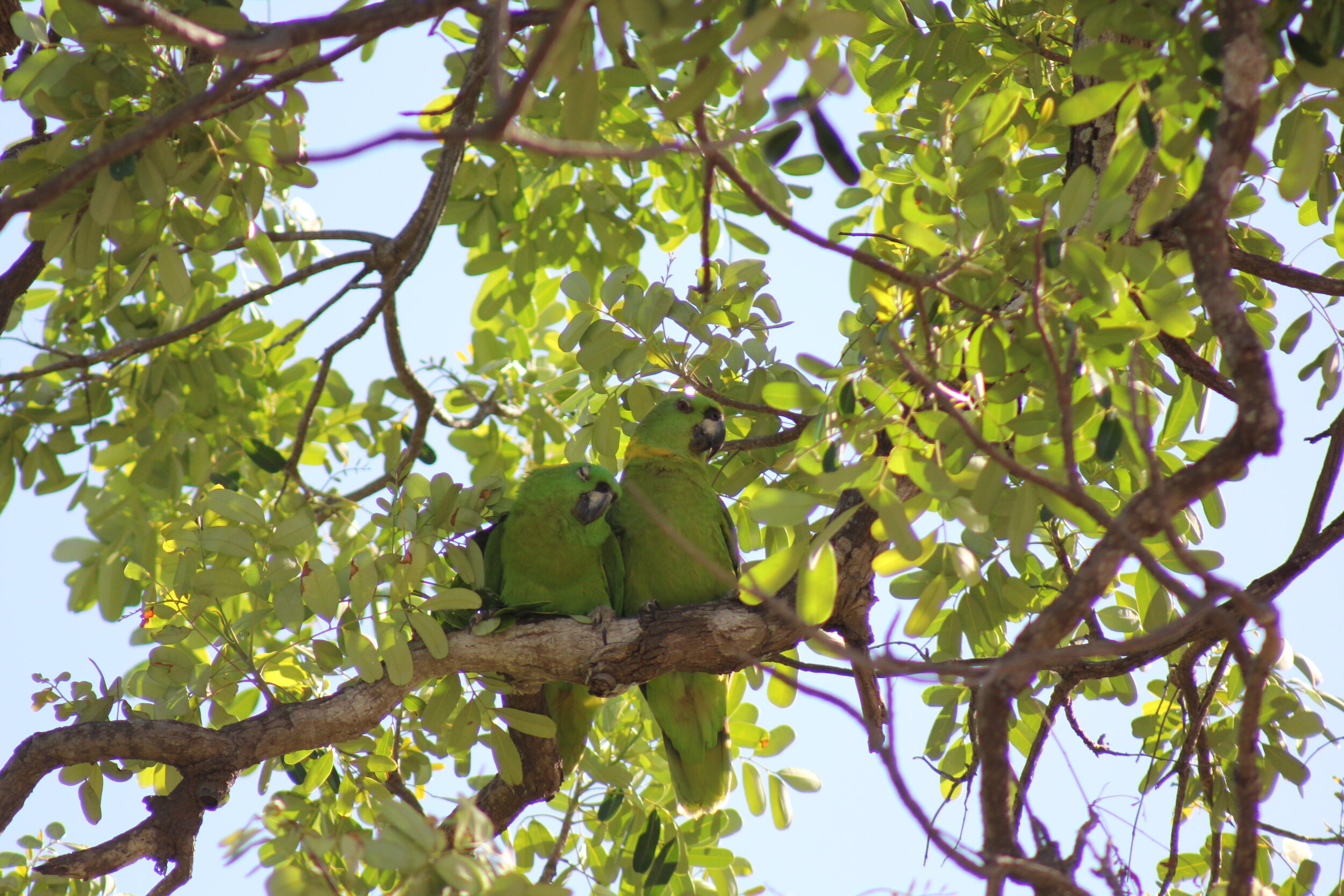Howler monkey
(Alouatta palliata)
Howler monkeys are common and widespread in Costa Rica.
Usually they live in groups of 10-20 individuals and they feed mainly on leaves, but also on fruits, flowers and buds.
As their name suggests, vocal communication forms an important part of their social behavior. Howler monkeys are widely considered to be the loudest land animal. According to Guinness Book of World Records, their vocalizations can be heard clearly for 4.8km. The function of howling is thought to relate to intergroup spacing and territory protection, as well as possibly to mate-guarding.
Their noses are very keen, and they can smell out food up to 2km away. They range in size from 56 to 92 cm, excluding their tails, which can be equally as long, in fact in some cases the tail has been found to be almost five times the body length. They have lifespans of 15 to 20 years.
Kingdom:
Animalia
Family:
Atelidae
Order:
Primates
Class:
Mammalia
Phylum:
Chordata
Variegated Squirrel
(Sciurus variegatoides)
Variegated squirrels are common and widespread in Costa Rica.
It is a medium-sized squirrel; the head-and-body length is about 260mm with a tail of the same length. It weighs about 500g. This squirrel is diurnal and rarely descends to the ground. It spends the night in a nest it builds, which is sometimes in a hole in a tree but more often is constructed of leaves and built in the fork of a branch close to the trunk.
This squirrel is primarily a seed-eater, but also consumes fruits and some animal matter in the form of insects and nestlings.
Unlike some other squirrels in colder climates, it does not hoard food and therefore plays little part in the dispersal of seeds.
Kingdom:
Animalia
Family:
Sciuridae
Order:
Rodentia
Class:
Mammalia
Phylum:
Chordata
Green iguana
(Iguana iguana)
The green iguana is the largest lizard in Costa Rica, and can reach 200cm in length.
Green iguanas are mostly vegetarian, they can swim and dive, and they are diurnal and when the sun is shining they rest in sun-exposed branches and rocks. Their whip-like tails can be used to deliver painful strikes and like many other lizards, when grabbed by the tail, the iguana can allow it to break, so it can escape and eventually regenerate a new one.
The green iguana and its relative the black iguana (Ctenosaura similis) have been used as a food source in Central and South America for the past 7,000 years. They are often referred to as gallina de palo ("bamboo chicken" or "chicken of the trees"), because they are said to taste like chicken.
Kingdom:
Animalia
Family:
Iguanidae
Order:
Squamata
Class:
Reptilia
Phylum:
Chordata
Spiny tailed iguana
(Ctenosaura similis)
Also known as black iguana, this black-grey-brown lizard is very large and can reach 130cm of lengths. They are excellent climbers and reach very high branches. The black iguana is very territorial and to defend his territory they perform a head-bobbing.
They are omnivorous and eat leaves, fruits, insects and small vertebrates.
Black spiny-tailed iguana have distinctive black, keeled scales on their long tails, which gives them their common name.
Kingdom:
Animalia
Family:
Iguanidae
Order:
Squamata
Class:
Reptilia
Phylum:
Chordata
Raccoon
(Procyon lotor)
Raccoons are common and widespread in Costa Rica.
They are omnivorous, solitary and mainly nocturnal and they usually travel on the ground but are proficient climbers.
Raccoons have no territorial instinct and are usually not disturbed by the presence of other raccoons on their side, unless they compete among themselves for access to food.
They are considered as land animals but can also swim, with an average of 5 km/h, and stay in the water for several hours. They have extremely adept front paws that they use for examining objects or food.
The characteristic black fur around the eyes gives them the nickname “Masked Bandits”, as this area looks like a bandit’s mask. This dark “mask” helps reduce flare and thus enhance their vision during night time.
Kingdom:
Animalia
Family:
Procyonidae
Order:
Carnivora
Class:
Mammalia
Phylum:
Chordata
White-throated magpie-jay
(Calocitta formosa)
The white-throated magpie-jay is between 43 to 56cm in length and weighs 205 to 213g. They have a conspicuous crest of curved feathers and a long, graduated tail. Its colors range from sky blue to turquoise above and they are white below.
The magpie-jays are noisy and curious and are cooperative breeder, with several adults tending one nest. They make a wide variety of calls, some soft and mellow, others loud, harsh, even mechanical.
Younger birds take several years to acquire the full range of foraging skills of their parents.
Kingdom:
Animalia
Family:
Corvidae
Order:
Passeriformes
Class:
Aves
Phylum:
Chordata
Gecko
There are 69 species of lizard in Costa Rica. They range in size from tiny geckos to giant Green Iguanas, live in a wide variety of habitats, and are extremely variable in appearance.
Many lizards are capable of „shedding” their tail, often an effective means of eluding predators.
Geckos are very common in Costa Rica. They are nocturnal and generally encountered on walls and roofs of buildings. This reptile has small scales over most of its body that lend it a velvety texture.
The house gecko can be distinguished by its foot characteristics. All its digits have non-retractable claws, divided pads, and lack toe webbing. This gecko is sometimes heard before it is seen, with a rapidly repeated chirp or chuck that can be loud and startling when nearby. Both sexes do this, although males do it more, particularly before they attack another male. They will also use the call to attract females.
Kingdom: Animalia
Order: Squamata
Class: Reptilia
Phylum: Chordata
Leaf-cutter ant
(Atta cephalotes)
Medium sized worker ants are the most often seen; filing one after the other, worker ants carry pieces of leaves or flowers along well-groomed trails through the forest.
Underground nests are evidenced by extensive bare patches dotted with large entrance holes. Once the workers carry the leaves underground, smaller workers clean and scrape the leaves, then chew them into small pieces, adding saliva and fecal matters. This sticky mass is added to an existing fungus garden, which provides food for the colony. In a mature colony, hundreds of fungal gardens are connected by a labyrinth of tunnels. Without the addition of ant feces, the fungus does not produce spores and cannot grow.
When a queen founds a new colony, she takes a piece of fungus with her, “fertilizing” it with her own eggs and feces before starting to raise new workers.
Kingdom:
Animalia
Family:
Formicidae
Order:
Hymenoptera
Class:
Insecta
Phylum:
Arthropoda
Northern tamandua
(Tamandua mexicana)
The Northern Tamandua is relatively common in Costa Rica.
They are medium sized, mostly golden with a contrasting black vest and have a prehensile tail. They are diurnal and nocturnal and travel on the ground and through trees in search of termite and ant mounds.
Sometimes they can be located by the tearing sounds they make as they rip into rotten wood. When threatened, they sit up, using their tail as a brace, and strike with massive foreclaws
Kingdom:
Animalia
Family:
Myrmecophagidae
Order:
Pilosa
Class:
Mammalia
Phylum:
Chordata
Armadillo
(Dasypus novemcinctus)
Armadillos are common and widespread in Costa Rica.
They may be active by day or night. Armadillos are not blind, but they do have poor eyesight. They rely on their ears and noses more than their eyes to detect food or predators.
They are agile swimmers and cross streams either by walking along the bottom or by gulping air and then floating across.
Females give birth to quadruplets.
Kingdom:
Animalia
Family:
Dasypodidae
Order:
Cingulata
Class:
Mammalia
Phylum:
Chordata
Mexican porcupine
(Sphiggurus mexicanus)
Mexican porcupines are fairly common in Costa Rica.
Their pale head contrasts with the black body. The yellowish spines, visible on the head, are largely concealed by the long fur on the body. Their nose is pink and bulbous and they have a prehensile tail, which is nearly naked.
They are arboreal and nocturnal. During the day, they sleep in a hollow tree, leaving behind a characteristic pile of musty, oval droppings.
The Mexican porcupines feed on fruits, seeds, buds, and young leaves. The most identifiable feature of a porcupine is its quills, which can be up to 30,000. Quills are hairs with pointed tips on the ends and are used for defense purpose. Porcupines are not aggressive animals, they will only attack if they are in danger, but when a predator approaches, the porcupine will turn its back, raise the quills and lash out at the threat with its tail. If the porcupine hits an animal with its quills, the quills become entrenched in the animal. It is commonly misconceived that porcupines are able to shoot their quills.
Kingdom:
Animalia
Family:
Erethizontidae
Order:
Rodentia
Class:
Mammalia
Phylum:
Chordata
Southern spotted skunk
(Spilogale angustifrons)
Skunks are black with a complex and attractive pattern of white stripes and spots.
They are nocturnal, emerge late at night and stay well concealed. Their dens can be found under rocks, in hollow logs, and under buildings, where their strong odor may reveal their presence. They are mainly solitary, but groups sometimes share a den.
Skunks are omnivorous but prefer insects and insect larvae. They are known for their notoriety of secreting liquid with a very foul stench, described as a blend of odors from rotten eggs, garlic and burnt rubber. This liquid is a mixture of sulphur containing chemicals like methyl and butylthiols. The muscles next to the scent glands can allow the skunks to spray in high accuracy for approximately ten feet. Aside from the odor, the spray can protect the skunks from possible attacker since it can cause irritation and even temporary blindness.
Kingdom:
Animalia
Family:
Mephitidae
Order:
Carnivora
Class:
Mammalia
Hummingbirds
There are 52 species of hummingbirds in Costa Rica.
Hummingbirds feed mainly on flower nectar: bills of many different shapes and sizes are each adapted to fit a certain form of flower; these birds play an important role as pollinators. They have an extremely fast metabolism, so they’re always hungry! They need to consume around half their own bodyweight every day, which is mostly made up of nectar, but also small insects and spiders. Hummingbird tongues are a true evolutionary marvel. They use their tongues as elastic ‘micropumps’, which work in a similar way to how we drink from straws. Only they use elastic energy stored at the base of the tongue to bring up nectar, rather than creating a vacuum in a straw like we do. It’s more like how we take up liquids using a squeezy pipette. And this is going on at seriously high speed – a hummingbird’s tongue will go in and out of a flower up to twenty times per second! Many species of hummingbirds flap their wings between 50-80 beats per second, making them a blur to the human eye. But that’s actually slow for a hummingbird! When they dive, they can flap their wings up to 200 times per second. Females attend to all nesting duties and raise young without help from males.
Kingdom:
Animalia
Family:
Trochilidi
Order:
Apodiformes
Class:
Aves
Parrot
Parrots make long daily commute between roosting and feeding sites and eat mainly fruits and seeds.
Their flight is typical of larger Amazona parrots: it’s a steady, rather slow flight on horizontal wings that appear to move only at the tips. They can be seen alone or in flocks, and pairs fly side by side with wings almost touching. Parrots produce varied calls that have a conversational quality.
Kingdom:
Animalia
Family:
Psittacidae
Order:
Psittaciformes
Class:
Aves
Main source: Reid, Fiona. 2010. The Wildlife of Costa Rica: A Field Guide. Cornell University Press.









